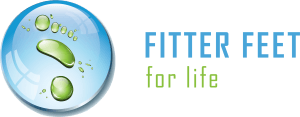Kids and Sport
With the start of the school year looming, this is a good time to think about ensuring that your children’s feet are safely ready for sports activities. The young body is still developing and the demands of sports can give rise to injuries, particularly ankle and foot injuries, that can cause long-term problems.
Here are some tips for looking after your child’s feet:
Check-ups
It’s a good idea to take your child for a check-up with a Podiatrist before he or she returns to school after the summer holidays. The specialist will ascertain whether your child could possibly benefit from wearing a supportive ankle brace or other adaptation, such as orthoses (orthotics) during competitive sports.
If your child has a previous injury, the check-up will also reveal whether it has completely healed or if he or she is still particularly vulnerable to further injuries.
Buy correct footwear
Ensure that your child starts every season with a pair of shoes that fit their growing feet. A rough guide is for there to be a finger’s width of room in front of the big toe inside the shoe. It’s also a good idea, if possible, to have two pairs of shoes to be worn in rotation.
You’ll probably want to get new shoes. Apart from the fact that children’s feet grow quickly, shoes lose their support and cushioning over time, and the soles and heals become worn. This can lead to heal pains and even sprains and stress fractures. When buying shoes, check to see that the toe box flexes easily and the shoe doesn’t bend in the middle of the sole.
For older children it’s also important to check they have the correct footwear for the different sports they take part in.
More tips can be found on our children’s feet page.
Inspect the playing ground
Many ankle sprains that happen during sports occur because of the uneven ground they are played on. Our advice is for parents to inspect the playing surfaces that your child plays on, especially in public practice areas. If you notice any holes or bumps in the ground, inform the those in charge.
Warm Up and Stretch before playing sport
Check that your child’s coach or teacher allocates time before every practice and match to warm up and stretch properly. Stretching and warming up before practice and games releases muscle tension and assists in preventing sports-related injuries.
Ankle Injuries
The recommended precautions will reduce the chances of your child incurring an injury, but injuries do happen. Ankle sprains in young children often resolve themselves, but can be dangerous if they affect the developing bones and cartilage, and so we recommend that all ankle injuries be treated immediately.
What to do?
Apply first aid. In a school sports environment, the teaching or coaching staff will know what to do. They should be able to say whether outside medical attention is needed immediately or whether it’s safe to wait a day or two to see how the injury develops. You might like to visit this website.
If the first aiders recommend it, or if the swelling or bruising doesn’t go away after a couple of days, you should take your child to a qualified podiatric surgeon. The podiatric surgeon will examine the injury and advise on a rehabilitation process. Prompt attention will minimise the risk of long-term problems such as instability and arthritis which can occur later in life. It will also ensure that your child can return to playing sport as soon as possible.
To arrange to see our podiatric surgeon, book an appointment online or speak to our team on 020 7627 4901.



